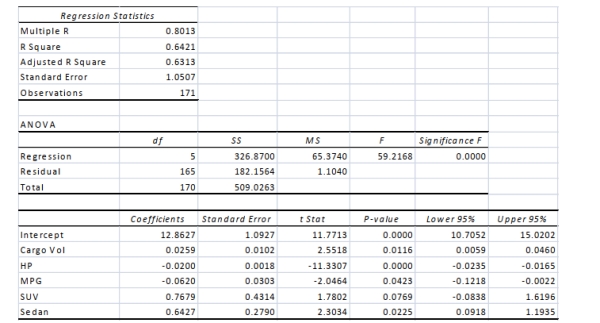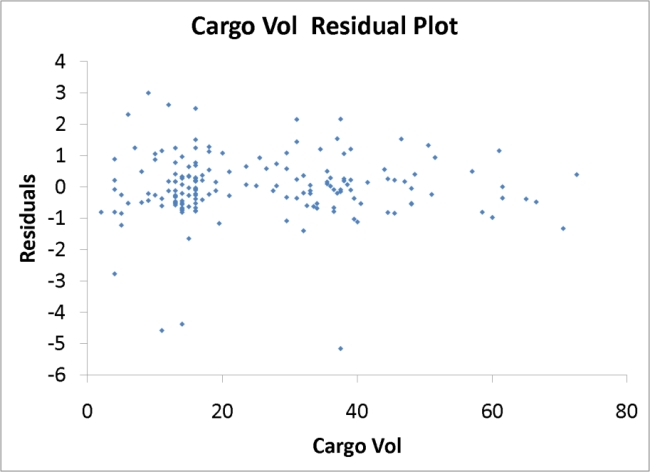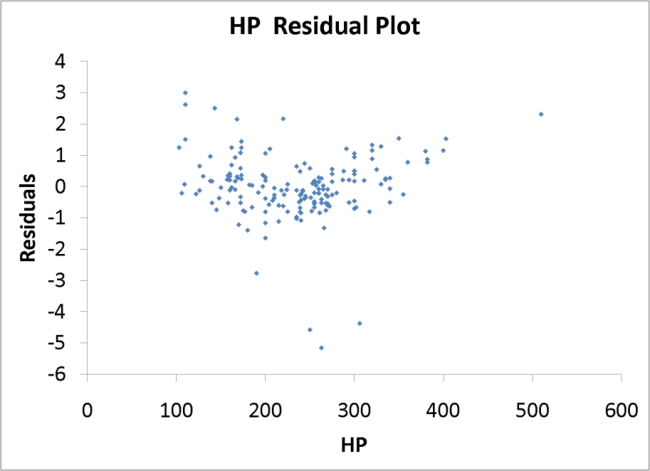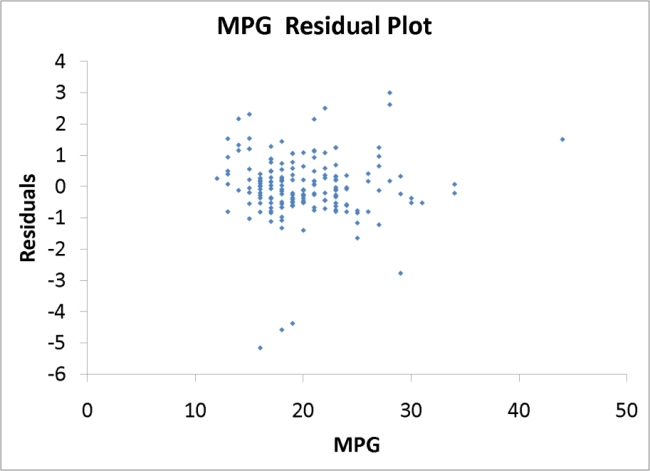SCENARIO 18-9
What are the factors that determine the acceleration time (in sec.)from 0 to 60 miles per hour of a
car? Data on the following variables for 171 different vehicle models were collected:
Accel Time: Acceleration time in sec.
Cargo Vol: Cargo volume in cu.ft.
HP: Horsepower
MPG: Miles per gallon
SUV: 1 if the vehicle model is an SUV with Coupe as the base when SUV and Sedan are both 0
Sedan: 1 if the vehicle model is a sedan with Coupe as the base when SUV and Sedan are both 0
The regression results using acceleration time as the dependent variable and the remaining variables
as the independent variables are presented below.  The various residual plots are as shown below.
The various residual plots are as shown below. 
A Roadmap for Analyzing Data 18-63 


18-64 A Roadmap for Analyzing Data 

-True or False: Referring to Scenario 18-9, the 0 to 60 miles per hour acceleration time of a
sedan is predicted to be 0.7679 seconds higher than that of an SUV.
Definitions:
WACC
The Weighted Average Cost of Capital represents a computation that determines a company's capital costs, with each type of capital being weighted according to its proportion.
Tax Adjustment
Modifications made to income or tax liability due to deductions, exemptions, and credits to comply with tax regulations or to benefit from them.
Interest Paid
The amount of money paid by a borrower to a lender in exchange for the use of borrowed money.
Target Capital Structure
The optimal mix of debt, equity, and other financing sources that a company aims to achieve to minimize cost of capital and maximize shareholder value.
Q4: Referring to Scenario 18-1, one individual in
Q5: If the Durbin-Watson statistic has a value
Q24: True or False: The goals of model
Q38: If the plot of the residuals is
Q44: A herpetologist performed a study on the
Q45: Referring to Scenario 14-4, at the 0.01
Q52: Referring to Scenario 14-5, what are the
Q66: Referring to Scenario 19-4, suppose the supervisor
Q69: True or False: Each observation is treated
Q98: <img src="https://d2lvgg3v3hfg70.cloudfront.net/TB2675/.jpg" alt=" " class="answers-bank-image d-block" rel="preload"